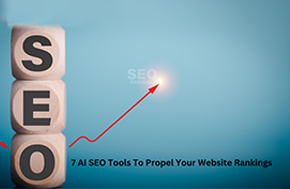
Use SEO to Reach the Right Audience
A plan of attack ahead of time makes all the difference
We’ve talked about the starter checklist for SEO before, but if you don’t know where to start in the whole process then it might seem a little overwhelming. But just like we said in our recent series about Google Ads, a good plan of attack from the beginning can make all the difference. When you know what you’re trying to achieve and who you’re trying to talk to, then all the pieces start to fall into place. We’ll walk you through the whole process of optimizing your website for search engines, and get you started with the basic tools you’ll need.
Decide on your audience
The first and most important element in Search Engine Optimization is to decide who your website is trying to talk to. The old sayings ‘you can’t be all things to all people’ and ‘if you try to please everyone you’ll end up pleasing no one’ are both true. If you try to be as neutral and broad as possible, you won’t end up connecting to anybody. Choosing a specific group of people that you’re trying to talk to is the best way to find success (read: conversions!).
One of the best ways to get started deciding on your audience to come up with a persona of your customers. If you have a little bit of a past, you can look at the demographics of your past customers, or even of just people who stay for more than a minute on your site. Through Google Analytics you can see general information like age, gender, the device they were using, and their basic interests. This can be a great starting point to create a fictional person that represents your entire audience. Keeping in mind the demographic information for this one persona is crucial for starting your search engine optimization process.
Brainstorm keywords
Now that you have your audience in mind, it’s time to start brainstorming keywords. In particular, these are the keywords that you’ll expect your audience to search on Google or Bing or whatever platform. Don’t worry too much about researching the performance of these keywords or anything yet, that comes up in the next step. Just step into your audience persona’s shoes and think about what they would search, and out of those searches, where they would want to see your service or product. Write down every idea you think might hold water, because you never know what might end up being a winner. Plus, it’s never a bad idea to have a backup list to test further down the road.
In your brainstorming, be sure to go a little deeper to include more niche keywords and longer keyword phrases. While it’s easy to come up with a keyword like ‘vacuum,’ the competition and noise for a Google search that’s broad will be fierce. But if you just add one other word, like ‘robotic vacuum,’ suddenly your market size has been cut down immensely. Not only that, but if you’re selling robotic vacuums, you’re much more likely to get qualified leads to your website if you don’t even show up in the general ‘vacuum’ search.
Validate those keywords
Once you’ve got your long list of keyword ideas, it’s time to start determining which of those words have a chance for success. Using tools like Ubersuggest, you can put in your single term and be shown a list of dozens of related keywords. Better yet, each of those keywords will have some stats attached: like estimated monthly search volume and the projected competition for both organic and paid search. Tools like this will allow you to cull and curate your original list down to a list you can be confident that your audience will be searching for.
Need a little extra help? These tools often have a way for you to see what your competitors are doing too. Plug in some of your competitor’s websites, and oftentimes you can see what keywords they’re ranking for and the types of audiences they’re trying to speak to. Even if you don’t want to outright copy them, this can still be a great way to find inspiration for your own search engine optimization efforts.
Write content for your audience
Once you’ve got your list of keywords, it’s time to start writing the copy that will appear on your website. The keywords will appear in this copy, of course, but there are a few different ways to go about writing copy. One option is to write your copy first, and then find places where your list of keywords can be inserted, or even replace certain phrases. This is a good option if you have prior experience copywriting, or you have a strong idea of what you want to say to your audience already.
The other option is to write the copy around your keywords. This is a good method if you don’t know exactly what you want to say yet, or if you don’t have as much experience copywriting. Lay out your keywords in order of importance, and then think about how to explain your product or service in terms of those keywords or phrases.
Fine-tune your meta titles and descriptions
Once you have the more long-form copy, it’s time to set the meta title and meta description for your pages. These are the short titles and blurbs that will appear on the Google search results page. This meta-information is important for a couple of different reasons. First off, these short blurbs are a significant factor in the search engine algorithm that decides what pages appear in what order in the search results. But these blurbs are also the only thing your audience sees before clicking on your website. These need to be packed full of good information that speaks to your customer persona and convinces them to browse to your website and learn more information.
Don’t set it and forget it!
Much like Google Ads, it’s important not to leave your copy and keywords alone when you’re done! However, unlike Google Ads, it can take a little bit longer to see the results of your efforts. The process is different enough that the next Mr. WPress blog post will focus on how to monitor and test your SEO efforts specifically. So be sure to come back around, and don’t hesitate to reach out to us if you need any extra help getting started with search engine optimization!



